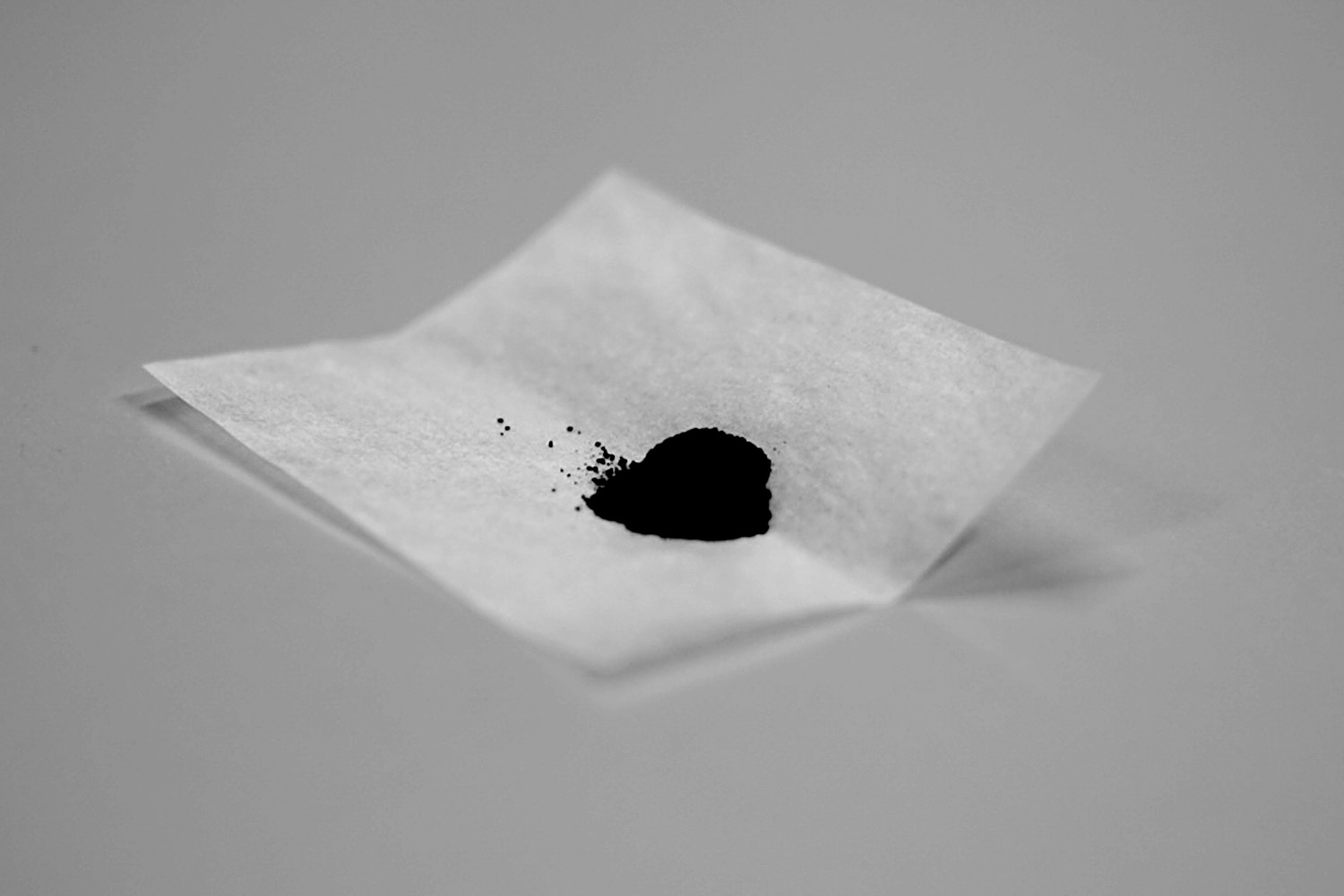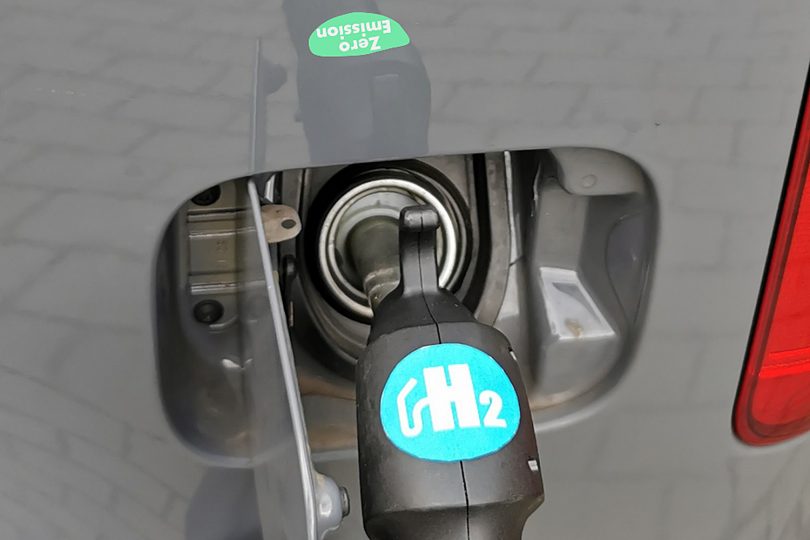Storing energy by conversion into green hydrogen Universities in Kyoto and Braunschweig work on more efficient hydrogen production
The greatest challenges of the energy transition remain the intermediate storage and transport of energy from renewable sources. One possible solution is emerging within the framework of hydrogen technology. Surplus renewable energy can be converted into hydrogen via efficient electrolysis and thus made storable in gaseous form. By using fuel cells, it is possible to make the energy available again. Technische Universität Braunschweig is conducting research together with Kyoto University in Japan on the optimisation of electrodes, which are of central importance in hydrogen production by electrolysis. The aim is to use more efficient and at the same time resource-saving materials.

Catalyst sample, Photo credit: Nicolas Schlüter.
Hydrogen is one of the hopes of the energy transition. It is a potential energy carrier of the future for propulsion systems and also as a storage solution within the framework of the “power-to-gas” concept. However, it only becomes sustainable when so-called green hydrogen is used or produced. The colour here indicates the origin: Green hydrogen is produced through the electrolysis of water. Electricity from renewable energy sources is used for this. Green hydrogen therefore does not cause any CO2 emissions.
To ensure that the storage solution with green hydrogen, meaning the conversion of surplus energy from renewable sources into hydrogen, functions efficiently, the electrolysis process is put to the test. At the heart of this process are electrodes.
Principle of water splitting
The reactions of water splitting take place at the electrodes. At the cathode, this is the “hydrogen evolution reaction (HER)”: Here protons (H+) are reduced to molecular hydrogen (H2). At the anode, the “oxygen evolution reaction (OER)” takes place, whereby water (H2O) is oxidised to molecular oxygen (O2). This produces protons that are transported through the membrane to the cathode. The electrodes here consist of layers of catalyst powders applied to both sides of the membrane.
So far, precious metals or compounds of these have been used as catalysts. As a catalyst for the “hydrogen evolution reaction”, platinum on a carbon carrier is used almost without alternative. The performance of the electrolysis is limited by the OER, which proceeds much more slowly than the HER. Furthermore, the long-term stability suffers under the oxidative conditions on the anode side.
New electrode materials – more available, more efficient, more sustainable
Up to now, the catalyst used for the anode has mainly been iridium dioxide. This represents a good compromise between activity and stability. “However, iridium is one of the rarest naturally occurring elements on earth, which limits its availability and makes it relatively expensive,” says Felix Kerner, a doctoral student at the Institute of Energy and Process Systems Engineering (InES) at TU Braunschweig.
“As part of the project ‘Durable and Efficient Compound Electrodes for Hydrogen Generation in PEM Electrolysis’, DECoH for short, we are working together with scientists and engineers in Japan on durable and efficient electrodes for hydrogen development,” says Kerner. The colleagues from Kyoto University in Japan will develop new catalyst materials with a reduced iridium content. At the same time, both the activity and the long-term stability of the catalyst materials are to be improved.
TU Braunschweig will evaluate the manufactured catalysts in electrolysers on a laboratory scale and with mathematical models and derive guidelines for optimising the performance, stability and efficiency of the electrodes.
The project aims to contribute to gaining both fundamental knowledge and experience at the production level. ” In addition, it aims to develop the potential of the hydrogen economy locally among the project partners, but also for the two countries involved. Furthermore, it will help to intensify the close international cooperation between research and industry and enable the targeted further development of electrolysis technologies,” says Kerner.
Hydrogen research in Japan
Japan is one of the first countries to launch a comprehensive hydrogen strategy in 2017 and is working on concrete plans to build a “hydrogen society”. Japan is already a leader in hydrogen, especially in the areas of transport, heating and power generation. Fuel cell-powered products such as cars and building heaters are already available on the market. In the future, hydrogen is to be produced, traded and consumed in large quantities, similar to oil today. Behind the United States and China, Japan is investing the third most money in research and development.

On the way to Chigasaki to the project partner TOHO Titanium. Photo credit: Daniel Schröder.
Researchers from TU Braunschweig travelled to Japan at the end of September 2022 to meet the project partners on site. “We visited the Katsura Campus of Kyoto University and met Professor Kohei Miyazaki there together with Dr. Thorsten Hickmann from the Eisenhuth company. He brought us up to date on his catalyst research. We told him about our planned measurement set-up as well as planned experiments. After a laboratory tour, we have already received the first samples of the novel catalysts,” Felix Kerner reports.


